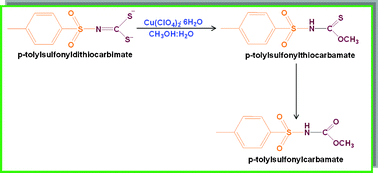Facile in situcopper(ii) mediated C–S bond activation transforming dithiocarbimate to carbamate and thiocarbamate generating Cu(ii) and Cu(i) complexes†
Abstract
Facile in situCu(II) mediated transformation of p-tolylsulfonyldithiocarbimate in conjunction with polypyridyl or phosphine


 Please wait while we load your content...
Please wait while we load your content...